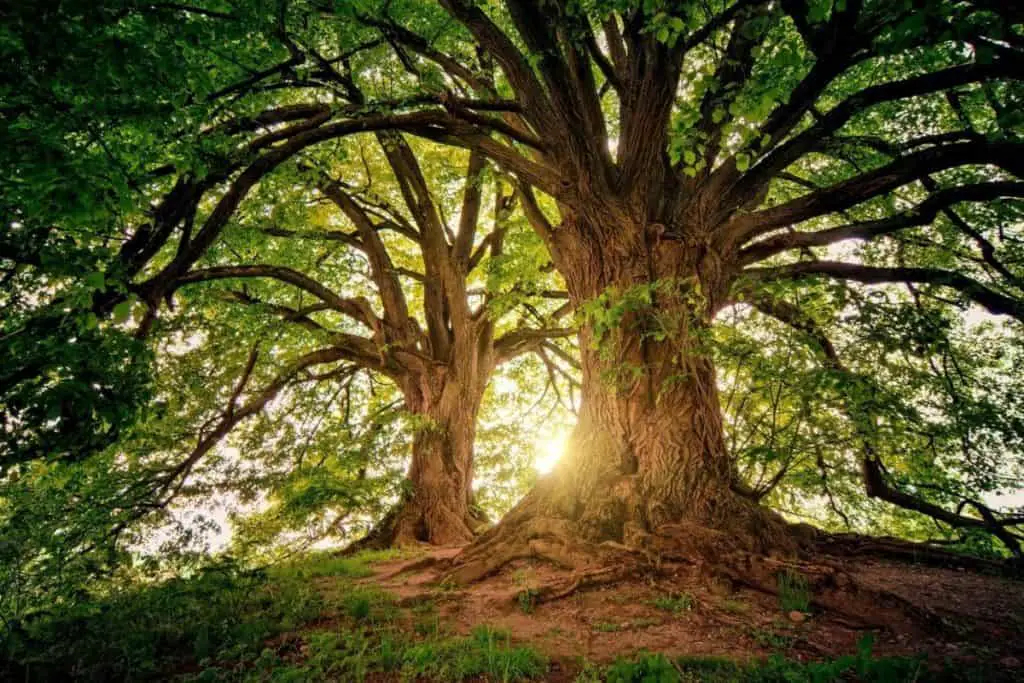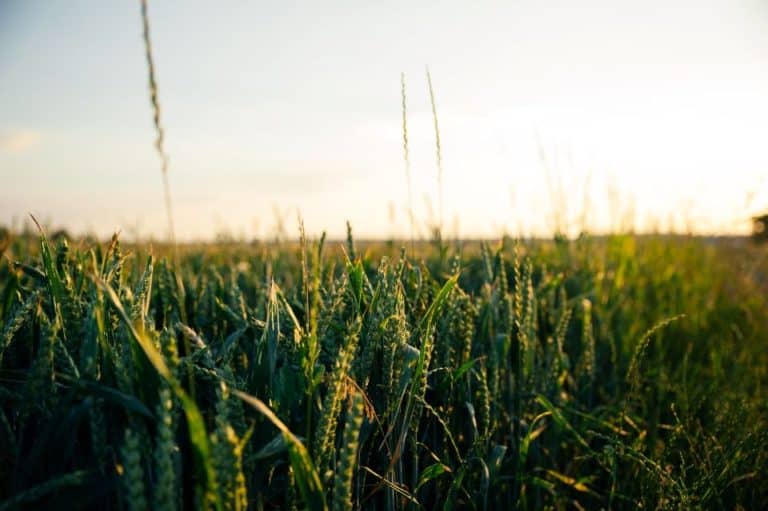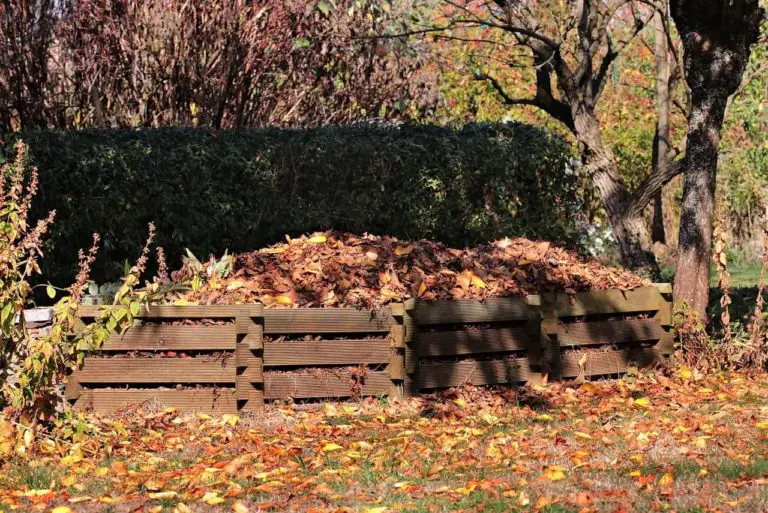How To Save a Dying Oak Tree (7 Tips You Can Use)
Oak tree enthusiasts and gardening fans feel overjoyed as they watch their trees flourish in the yard. Yet, when a tree gets sick, worried thoughts and sadness fill the air about its health. Saying goodbye to a beloved tree because of illness is not just difficult; it’s like losing a treasured part of the garden that tugs at the heartstrings.
Contents
Oak Trees – More Than Just a Pleasant Sight
Oak trees are a bounty of nature that provide more than just a feast for the eyes. They are like caretakers in the way that they obstruct heavy winds, provide shade in the heat, produce fresh air, nourish scurrying animals and even lend us their sturdy branches for our favorite outdoor activities.
Most of us have had a childhood where we wished to climb branches and build little houses within the large span of magnificent Oak trees. Although still and calm, the aura of such trees is an undeniable gift from nature itself.
What Are Oak Trees?

An oak is defined as a tree that is from the genus Quercus of the beech family. The other common names for oak trees are stone oaks, silky oaks, or she-oaks, based on their type and particular features. North America and China are the largest centers for oak trees.
The leaves of these trees appear in different forms and may be spirally arranged, serrated, or possessing smooth margins. Many of these strong, hardwood trees do not shed dead leaves until spring. Oaks are known for their solid wood composition, which allows these giants to live for hundreds of years.
The food produced by oaks consists of a nut referred to as the acorn or oak nut. Not only do they provide a refreshing color to the garden, but also the proper width of shade you might need during hot summer afternoons.
Oak trees are widely known and appreciated for their low maintenance
Due to easy upkeep, you can confidently plant these beautiful trees in the yard or on a lawn. But there are a few things you should be informed of if you want to plant and care for an oak tree. With the proper knowledge, you can also help a dying oak tree heal and grow to its full potential.
How You Can Save a Dying Oak Tree
If you have an oak tree or plan to keep one, you should know the general care required for an oak tree to remain fresh, healthy, and beautiful.
Two things that an oak tree needs are full sun and well-drained soil
There is no need to water them every day in winters. However, during dry summers, you can water them twice a day. Make sure you thoroughly soak the soil without it getting waterlogged.
What is Pruning, and Why Is It Important for Oak Trees?
Like all other deciduous trees, the oak needs what is called pruning. This is important if you are particularly concerned about a withering oak tree. However, evergreen oak trees are capable of growth and do not need to be pruned.
Pruning is a horticultural practice. It is carried out by removing selective parts of certain plants. These parts are unwanted buds, roots, and branches.
Pruning helps promote healthy growth in new directions. The best time to do this for oak trees is the dormant period in the winter, as it allows the plant’s wounds to heal as the spring starts. Moreover, it is of utmost importance that you prune oak trees between March and July. This care is critical because, at this time, small beetles may transmit oak wilt – a fungal disease that leads to the discoloration of leaves and eventually results in the tree’s death.
Why Fertilizing Is Critical for Oak Trees
Among several remedial methods for restoration and care of oak trees is another significant factor: fertilizer. Mature oak trees need fertilizers to thrive. The best time to fertilize your oak trees is in the spring, late summer, or autumn.
During these times, the rainfall will help the nutrients get absorbed in the deeper parts of the soil. It is safe to fertilize these trees using a nitrogen-based fertilizer with added phosphorus and potassium.
All of the information above entails the general care an oak tree needs to survive. However, if your oak tree is on the decline, there are six ways you can revive and nourish your precious plant. If you follow these, the chances are high that your oak tree will come back to optimum health, and your care will pay off.
The Common Symptoms of a Wilting Oak Tree
Here are some signs you should be aware of when analyzing the health and vigor of your tree.
- Decay
- Deadwood
- Poor Joints
- Cankers
- Odd tilting
6 Ways to Care for a Dying Oak Tree
Watering
Undoubtedly, the first thing you need to do is make sure you water the oak tree properly. Inadequate water supply or too much of it could mean the death of the tree. You mustn’t overwater or underwater your plant.
The amount of water depends on the climate that you live in. During dry summers, you might need to water your oak tree twice a day. When watering, keep in mind that the water should be applied at the drip line because that is the area where the water uptake rootlets are.
Pruning
By pruning your oak tree, you help revitalize its strength and vigor. If the fungus is limited to a certain part, only prune the affected area. For pruning, it is vital to use sterilized pruning instruments and cut the infected branches two inches below the fungus.
Care should be administered to ensure that the pruned clippings do not touch the other healthy parts of the oak tree. These clipped parts should be thrown in a garbage bag immediately.
Use Fungicide
In addition to pruning, to keep the oak tree safe from getting infected again, you can spray a fungicide. Make sure to read through the labels on the fungicide spray can or bottle. Using a preventive fungicide can keep your oak tree safe from several infectious diseases.
Fungal infections can cause severe damage to the oaks, especially their trunks, preventing them from transporting water and nutrients up the tree. This is where fungicides play their role. You should inject your oak tree with a strong fungicide to prevent it from getting infected. You can even use tree injectors for better results.
Care While Using Mulch
Do not use mulch excessively. Applying mulch to plants can prove to be unhealthy if you are misusing it. All the extra mulch can bottle up and suffocate the roots of the oak tree. When the roots cannot breathe properly, they eventually begin to rot and attract harmful bacteria.
So if you want to know how to save your oak tree from dying, you need to know the right amount of mulch required by that particular tree. Moreover, if you want to prevent the roots from rotting, you should frequently clear mulch buildups.
Use Fertilizer
The most notable care requirement for oak trees is a good fertilizer. You can use a simple, all-purpose fertilizer as well as specific nitrogen fertilizers to keep your oak tree safe from getting infected. You need to apply the fertilizer beneath the tree branches. Having said that, it is ideal for covering the entire area beneath the tree with fertilizer for the nutrients to reach the roots.
You can fertilize your oak tree in spring, late summer, or autumn as the rainfall will help the nutrients in traveling through to the deeper parts of the soil.
Ensure proper drainage
Poor drainage is a common reason for withering and decaying oak trees. It is essential to build an appropriate drainage system for proper maintenance and care of an oak tree. Older oak trees can withstand excessive water, but younger ones cannot. Excessive moisture can lead to tree decay. For this very reason, you need to drain the water properly and introduce oak trees to direct sunlight.
Some Extra Tips
- Use gloves when dealing with a diseased tree
- Inspect the tree regularly for signs of damage
- Thoroughly clean all equipment with a suitable disinfectant
- Rake fallen leaves
- Discard infected branches separately
These essentials can help you recover your beautiful oak tree with promising results. However, the one thing you need to do the most is providing proper care and love to the oak tree. When dealt with in the right way and given due attention, these glorious trees flourish and develop into solid, hardwood greenery.






